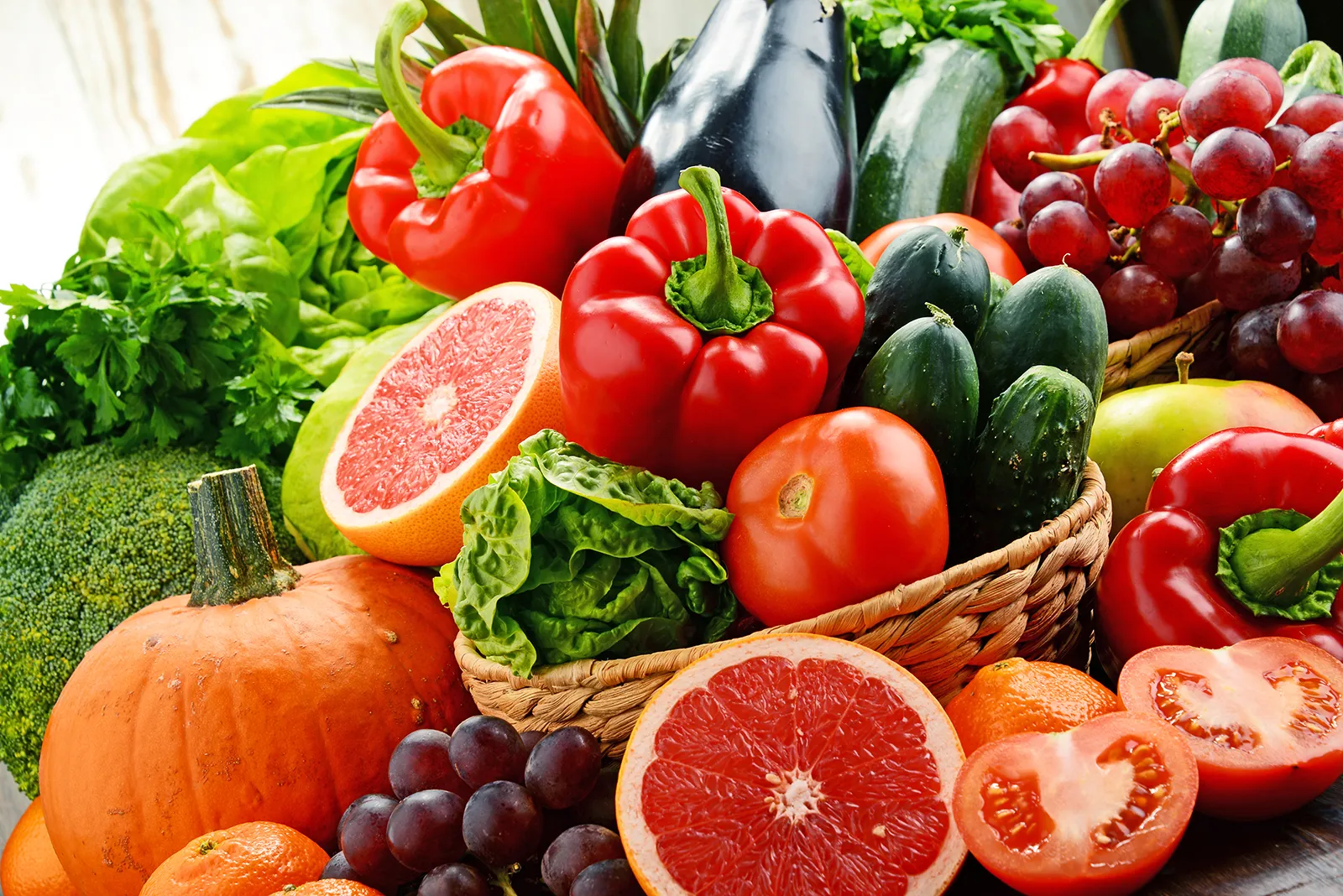- Judith Akatugba
- 0 Comments
- 674 Views
A lot of attention is focused on what you should not be eating: give up added sugar, give up [insert food of the month that is used as a scapegoat]. However, what you put on your plate matters more than what you take away when it comes to your health. Additionally, the less healthful options naturally take up less space in your diet without your having to think about it when you concentrate on including items that are known to promote health.
Read Also: Ideas for a Traditional Living Room in Your House
“Whole grains, lean or plant-based protein, and lots of veggies for a big nutrition boost,” suggests Beth Stark, RDN, LDN, as the main items on your dinner plate. A balanced diet should include a range of foods, and while there are many more than ten that we’d advise incorporating regularly, the following 10 provide some of the most notable nutritional advantages.
1. Salmon
Eating two to three servings of fish per week is advised by the 2020–2025 Dietary Guidelines for Americans, and salmon is among the healthiest varieties. “Salmon functions similarly to a brain multivitamin. It’s a great source of high-quality protein and packed with vital nutrients that strengthen the brain, like choline and omega-3 fatty acids,” explains Lauren Manaker, M.S., RDN. Additionally, eating salmon is associated with improved heart health, and according to Manaker, “fish like salmon may have a positive impact on sleep quality.”
Sustainable practices should be taken into account when selecting salmon. It is advised by Manaker to search for “options that have integrity by looking for the Best Aquaculture Practices certified seal.”
Salmon is also very adaptable. Try our Honey Garlic Salmon for a quick and delectable supper, or make our Easy Salmon Cakes, which are a favorite whether you buy fresh or canned salmon.
2. Sweet Potato
While both white and sweet potatoes can be included in a healthy diet, classic orange sweet potatoes have an advantage over white potatoes because, according to the USDA, they provide more than 280% of your daily requirements for vitamin A and 8 grams of fiber per cup. Different phytonutrients are provided by purple and white sweet potatoes, among other kinds. Purple sweet potatoes, for instance, include chemicals in them that may improve heart health and lower inflammation. Sweet potatoes, both orange and purple, may benefit eye health as well.
There are various ways to consume them, like as baked, roasted, mashed, or even stuffed. They can be added to pasta meals, casseroles, soups, and other recipes. For ideas, see these 25 Recipes for Sweet Potato Dinners.
3. Chickpeas
Chickpeas are a great source of plant-based protein, which has been found to have enormous health advantages. “Chickpeas add satisfying plant-based protein, fiber, and other nutrients like iron, folate, and selenium to a meal, making them a tasty and adaptable addition.” Because of their high fiber and protein content, they are also regarded as low glycemic foods, which means they aid in stabilizing blood sugar levels throughout digestion “, explains Stark. For an added nutritional boost, chickpeas can be added to practically any cuisine, including salads and sides. For meatless options, Stark suggests substituting them with meat in casseroles, soups, salads, and pasta dishes. However, the options are really limitless. Not sure where to begin? Take a look at these nutritious dishes that use canned chickpeas.
4. Lentils
Though they may be small, lentils pack a powerful punch. According to a 2017 International Journal of Molecular Sciences study, they are rich in plant-based protein, fiber, vitamins, minerals, and phytonutrients and have several health benefits, such as improving heart health and lowering the risk of diabetes and several malignancies. Additionally, they are an excellent source of iron—a mineral that is particularly crucial if you don’t eat a lot of meat.
Lentils are fantastic since you can use them in so much more than just soup! Turn them into meatballs, burgers, or lentil cakes. Use for a plant-forward bolognese instead of beef (or go half-sies with each). Alternatively, try our Red Lentil Curry with Squash or Lentil Stew with Salsa Verde.
5. Dark Leafy Greens
Super greens don’t just come from kale. Leafy greens that are dark in color, such as spinach, Swiss chard, collard greens, mustard greens, and beet greens, are abundant in health-promoting vitamins, minerals, and phytonutrients. Eating dark leafy greens will contribute fiber, iron, folate, potassium, and vitamins A, C, and K to your diet, albeit each has a somewhat different nutritional profile. Select your favorites and include them into a variety of dishes, such as salads, grain bowls, spaghetti sauces, stews, and soups! For ideas for dinner this week, go through our collection of nutritious side dishes with greens.
6. Tempeh
Tempeh is a fermented soy product that adds essential vitamins and minerals, healthy fats, and more than twice the amount of plant-based protein than tofu to your diet. Tempeh is a fermented food that helps maintain gut health by containing prebiotics. “Tempeh also has greater versatility than tofu. It’s a fantastic choice for a variety of meals since it takes on the flavors of your food,” says Fuel with Stef owner Stefanie Di Tella, MScFN, RD. Tempeh can be diced and added to a stir-fry, marinated and seared on top of a bowl, grilled or baked in strips for a sandwich, or minced to mimic the texture of ground beef.
Are you new to tempeh? Start with our Gochujang-Glazed Tempeh & Brown Rice Bowl or Sesame-Honey Tempeh & Quinoa Bowl.
7. Wheat Berries
You may substitute wheat berries, a complete grain with a slightly chewy texture and nutty flavor, for most other whole grains. There are more than 4 grams of fiber and 6 grams of protein in a half-cup (cooked) portion. Wheat berries digest more slowly than processed grains and even certain other whole grains because to these two ingredients. For those attempting to control their blood sugar, a slower stomach emptying is very advantageous. Anyone who want to prevent the energy spike and crash that follows a meal, however, can also profit from it. Consuming whole grains can enhance insulin sensitivity, lower your risk of heart disease, and maintain a healthy digestive system.
Make a grain salad for a substantial side dish, use wheat berries as the foundation for a grain bowl, or use them into your soups and chillis.
8. Olive Oil
If you just make one alteration to your cooking methods, make it to use olive oil instead of other fats more frequently. “A staple in many Mediterranean [diet] dishes, olive oil is an unsaturated fat, which is linked to a number of health benefits, including reduced blood pressure and lowering LDL cholesterol,” according to Di Tella. Olive oil has numerous cardiovascular advantages, but it also contains a lot of antioxidants and may lower inflammation. Olive oil is a useful ingredient for both cooking and plating. Your food will taste much better and be more nutritious with a dab of premium olive oil or an olive oil-based dressing. Who doesn’t enjoy an after-dinner treat? You can even use it in baking, such in these Olive Oil Chocolate Chunk Blondies.
9. Tomatoes
Tomatoes contain a high concentration of lycopene, a phytonutrient linked to lowered cholesterol, a decreased risk of stroke, a decreased risk of cancer, and possibly even protection from sunburns, in addition to essential vitamins and minerals. Though both types of tomatoes are rich in nutrients, cooked tomatoes may have more lycopene than raw ones. So go ahead and enjoy your tomato preference. If possible, enjoy fresh tomatoes during their season in the summer and limit your tomato consumption to cooked tomatoes and tomato sauce during the rest of the year.
A review from 2021 that was published in Antioxidants states that eating fat increases the absorption of lycopene from tomatoes. So enjoy your summer tomatoes with a little olive oil, as in our Tomato Salad with Lemon-Basil Vinaigrette. Make an olive oil-infused tomato spaghetti sauce for a potent combination in the cold.
10. Cabbage
This unassuming vegetable has a surprisingly wide range of health advantages. “Cabbage is a member of the cruciferous vegetable family that may contribute to a lower risk of various chronic diseases, including certain cancers, thanks to its abundant fiber and phytonutrient content,” Stark explains. Consuming cruciferous veggies may help mend the gut, lower inflammation, and guard against some cancers. According to Science Direct, flavonoids, especially those found in purple cabbage, may be beneficial to your heart. According to Stark, “incorporating cabbage, in any color, is an easy way to change up the nutrients you get at dinner,” even if red, green, and purple cabbages have slightly varied antioxidant profiles. She also suggests experimenting with other cooking techniques, such as stir-frying and roasting. To begin, sample our Sauteed Cabbage, Balsamic Roasted Cabbage, or Spicy Cabbage Slaw.
Not a fan of cabbage? Similar health advantages are provided by other cruciferous vegetables like Brussels sprouts, cauliflower, and broccoli.
The Final Word
Though it’s a terrific place to start, this list of healthy supper options barely scrapes the surface! How can I maximize the benefits of my meal? Plant-based foods such as fruits, vegetables, legumes, beans, nuts, seeds, and whole grains should make up a large portion of your plate. This will ensure that your meal is satisfying and nutrient-dense.











